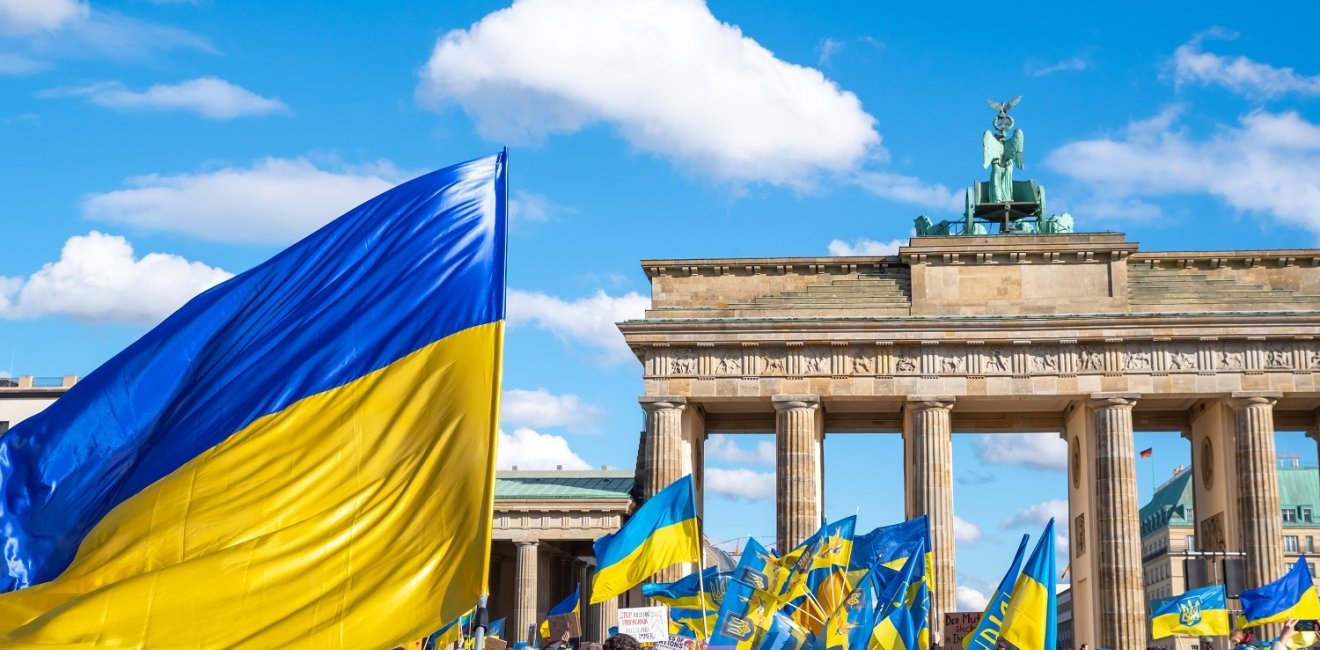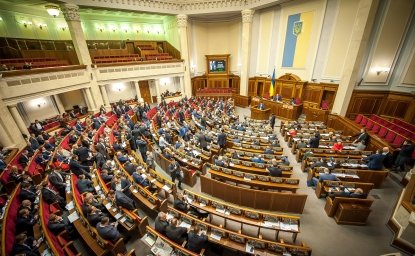
A blog of the Kennan Institute
What is happening with the millions of people who fled Ukraine? It’s hard to say: They are seldom covered in the media of the countries where they found refuge and are often not well-connected to their new local communities. However, hosting communities can implement strategies to make a difference.
The displacement of millions of Ukrainians due to Russia’s full-scale invasion is not just a humanitarian crisis—it is a defining challenge for Ukraine’s national identity, economic recovery, and global presence. While refugees face integration struggles in host countries, their exile also presents opportunities for community-building, knowledge transfer, and long-term resilience. Ukraine’s government should fully assess the realities these displaced populations face abroad, consider how to both help and hear from them, and maximize their potential for when the time comes to bring them back home after the war.
The Story in Numbers
According to data from 2025 collected by the United Nations High Commissioner for Refugees (UNHCR), around 6.3 million Ukrainian citizens are living across Europe, and approximately 403,600 reside outside of Europe, with the majority settling in Canada and the United States.
These numbers indicate the tremendous population displacement caused by Russia’s invasion of Ukraine. It is by far the largest population displacement crisis in Europe since World War II. As significant as this crisis is, however, we know little about the impact these Ukrainians have had on their host countries, or how the displacement has transformed the refugees themselves.
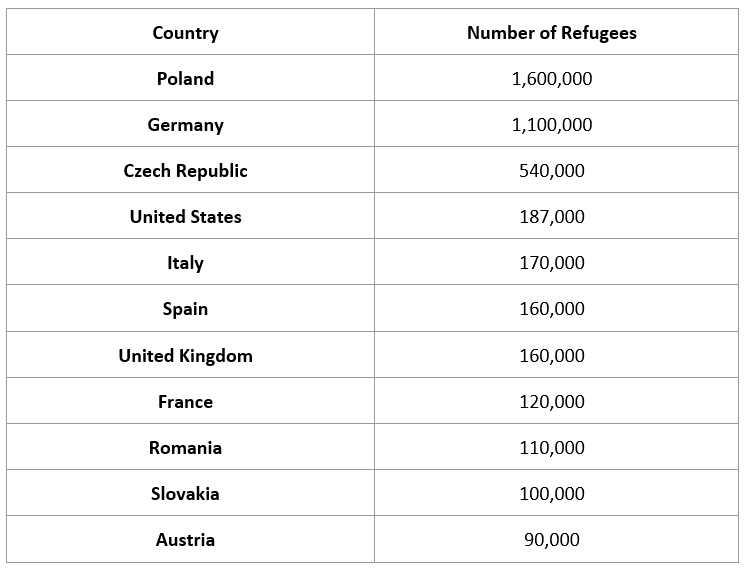
The vast majority of refugees reside in neighboring Poland (1.6 million), Germany (1.1 million), and the Czech Republic (540,000). Hundreds of thousands more are scattered across Central and Southern Europe as well as the United Kingdom, and up to 200,000 Ukrainians have migrated to Nordic countries (Norway, Denmark, and Sweden combined).
According to several research papers, Ukrainian families abroad face numerous challenges. For example, the report “Social impact of migration: Addressing the challenges of receiving and integrating Ukrainian refugees” details everyday issues, such as limited proficiency in the host country’s language(s), which hinders job opportunities, and lengthy processes to validating and transferring Ukrainian professional qualifications, which delay employment. Parents, predominantly women with children, face additional difficulties due to limited childcare services, further affecting their ability to work.
In the last year, many countries have changed policies regarding Ukrainian refugees. Some nations, like Poland or Austria, are reassessing financial support, leading to increased rates of evictions and homelessness among refugees. Hundreds of thousands of Ukrainians have become productive members of the workforce in their host countries, contributing their share of taxes. For example, in Poland, Ukrainian workers contributed between 0.7 percent and 1.1 percent of the country’s GDP in 2023, according to a study from Deloitte. Nevertheless, public opinion about Ukrainians is often negative in many host countries. These views are often fueled by disinformation or misinformation in the mainstream press, creating conditions for potential conflict.
Ukrainian refugees face unique challenges—not only because of the conditions in the hosted countries but also because they struggle to maintain a connection to their homeland, preserving their cultural identity, and cope with frequent, devastating news from home.
These individuals in exile also represent a vital resource for Ukraine’s post-war reconstruction. They have the potential to return with diverse experiences, knowledge, and perspectives. However, their voices remain unheard at home just as much, if not more, than in their new host communities.
Ukrainians Return Home to Russian-Occupied Lands—Why?
Displaced Ukrainians who remain in their homeland difficult, though different, challenges. According to the International Organization of Migration (IOM), an estimated 3.6 million people were internally displaced in Ukraine as of October 2024, while an additional 4.3 million previously displaced individuals have returned to their primary place of residence.
The number of internally displaced persons (IDPs) continues to grow as the Russian invasion persists and intensifies. Citizens continue to evacuate from areas under heavy Russian bombardment, such as Pokrovsk.
According to a recent press report, approximately 130,000 Ukrainians have returned to their homes in the Russian-occupied Donbas region over the past year. This data, published by Petro Andryushchenko, an adviser to the exiled mayor of Mariupol, comes from Russian officials overseeing the Sheremetyevo-2 airport checkpoint that processes most Ukrainians traveling to the occupied territories. According to Andryushchenko, this wave of returns began in 2023 after Ukraine’s government canceled the $48 monthly social stipend for internally displaced citizens. Without this support, and without a place to live, returning to their homes becomes an increasingly unavoidable choice.
Andrii Dikhtiarenko, founder and editor-in-chief of Realnaya Gazeta (Real Newspaper) from Luhansk—a major city in Donbas occupied by Russia since 2014—told me that these numbers appear accurate. He thinks that there are three main reasons why people tend to return to occupied territories, despite the harsh living conditions.
First, Russia launched a campaign last fall to seize ownerless housing. “People realized that their homes could be taken away, and this became an incentive to return, get a Russian passport, and register their property with new documents,” Dikhtiarenko explained. “They would spend the winter there and leave again.”
Second is the shelling of energy infrastructure in Ukrainian-controlled territory. Some people who were renting apartments in these areas, struggling with rent, energy shortages, and lack of heat, decided to leave.
Third, last year, Ukraine’s government cut benefits for IDPs, and the remaining support programs were not sufficient to sustain the IDPs. “People that can't afford housing are returning. Add in the fatigue over the lack of prospects, the periodic cancellation of benefits, and the constant shelling of Ukrainian cities.”
War’s Toll on Mental Health
The Russian invasion has inflicted an enormous toll on people’s mental health, both in Ukraine and elsewhere. According to a recent report by the International Organization of Migration (IOM), 38 percent of Ukrainians are at high risk of depression. These symptoms are more commonly reported by women (42 percent) and persons with self-reported disabilities (45 percent).
The reported experience of symptoms of depression was highest among IDPs (50 percent), followed by returnees (42 percent), and the non-displaced (35 percent). The risk of depression was higher among those considering relocating from their current location, whether in the short or long term.
The prevalence of post-traumatic stress disorder (PTSD) is also very high among Ukrainians living abroad. The first comprehensive study by the European Commission on people displaced from Ukraine in Denmark finds that almost one in three (29.4 percent) exhibits signs of PTSD.
The European Commission’s 2023 study also identified key everyday challenges reported by survey respondents, including difficulty accessing treatment for their health issues (25 percent), worries about family still in Ukraine (22 percent), concerns around securing employment (12 percent), and fear of being returned to Ukraine (9 percent). The latest 2024 report found that more than 60 percent of respondents hope to stay in Denmark, even when the ongoing war no longer poses a threat to their hometown. Notably, the report indicated that 44 percent of Ukrainian refugees have lost family members or other close relatives as a result of the war.
The Demographic Dimension
Recent analyses of Ukrainian demographic trends reveal a devastating situation. Ukraine’s population has declined by 10 million (around a quarter) since the start of Russia’s full-scale invasion—a result of refugee displacement, war deaths, and a collapse in the birth rate, according to a United Nations report from October 2024.
Ukraine, which had a population of over 50 million when the Soviet Union collapsed in 1991, has experienced severe population decline, like almost all of its Eastern European and Central Asian neighbors. In 2021, the last year before Russia’s full-scale invasion, its population was approximately 40 million.
Ukraine’s Institute of Demography and Quality of Life Problems has predicted that Ukraine's population could decline to 25.2 million by 2051. To minimize the consequences of the crisis, the Cabinet of Ministers has approved the Strategy for Demographic Development for the period of up to 2040.
Both the demographic and economic problems that threaten Ukraine’s future are key drivers behind the Ministry of Foreign Affairs’ official policy on the return of Ukrainian refugees and the creation of the Ministry of Unity. Ukraine’s government is now urging host countries not to fully integrate Ukrainian refugees and to reassess financial and other forms of support to encourage them to return home sooner.
In the long run, this short-sighted approach undermines relationships between citizens, their homeland, and their (hopefully temporary) countries of residence. For the refugees themselves, the pressure campaign only creates anxiety, undermining confidence in the future.
Millions Without Representation in Exile: What Can Help?
Millions of Ukrainians abroad find themselves without adequate representation in their new societies. Their stories and their issues are often underreported or misrepresented in mainstream and social media. This lack of inclusion not only threatens their physical and psychological safety but also risks alienating them further from their communities. Without proper support or connection, many feel isolated and vulnerable. Some even grow to resent their new environments. Addressing this complex issue requires a multifaceted approach.
One area of progress is the notable growth in media coverage that accurately reflects Ukrainian refugees’ experiences, challenges, and contributions. Yet this growth remains insufficient in adequately informing Ukrainian citizens. According to Andrii Dikhtiarenko, Ukrainians often do not properly understand the risks of returning to Russian-occupied territories. “People can be imprisoned because the Russian FSB will see that they have donated to the Armed Forces of Ukraine. But people take the risk because they are not aware of the level of such danger—they don't have enough information, and it's hard to reach them,” he said.
Lyubov Rakovitsa, a media manager and director of the Donbas Media Forum, a community that unites media professionals and activists from Eastern Ukraine and occupied territories, believes it is also crucial to reach Ukrainians in exile and reconnect them with their Ukrainian community. It is not enough for Ukrainians at home to hear about them—they need to hear from them. “The voices of those millions of people have to be included in decision-making processes,” she told me in an interview.
Rakovitsa cofounded Liudy I Polityka (People and Politics) along with Zaborona Media, an online magazine focused on human rights and culture, an online platform that aims to connect Ukrainians living in exile. The initiative leverages the combined expertise of Ukrainian newsrooms, independent journalists, technological innovations, and international academic and civil society partners to create a unique media ecosystem. This ecosystem utilizes cutting-edge artificial intelligence tools to monitor global and hyperlocal news, counter disinformation, and highlight stories of resilience and success among Ukrainian refugees.
Additionally, local Ukrainian communities and organizations in host countries play a critical role in building informal networks and supporting integration. Multiple communities exist in Berlin (VITSCHE, Ukrainians in Berlin), Warsaw (Stand with Ukraine, Sunflower Solidarity Community Center), Copenhagen (Bevar, Lastivka), and New York (Razom, Spilka), to name a few. These grassroots efforts help displaced Ukrainians gain new knowledge, skills, and connections that not only ease their transition but also prepare them to contribute to Ukraine’s reconstruction in the long term.
Preserving Ukraine’s national identity while fostering inclusion is essential for its future. Every Ukrainian, whether in Kyiv, Kraków, Mariupol, or beyond, is an integral part of the country’s recovery. By empowering exiled Ukrainians and supporting their integration into new environments while keeping them connected with their home country and culture, these initiatives ensure their voices are heard, their communities are united, and their potential is fully realized. Together, these efforts strengthen both the global Ukrainian community and the foundation for a future Ukraine—one that is both resilient and united.
The opinions expressed in this article are those solely of the author and do not reflect the views of the Kennan Institute.
Author


Kennan Institute
After more than 50 years as a vital part of the Wilson Center legacy, the Kennan Institute has become an independent think tank. You can find the current website for the Kennan Institute at kennaninstitute.org. Please look for future announcements about partnership activities between the Wilson Center and the Kennan Institute at Wilson Center Press Room. The Kennan Institute is the premier US center for advanced research on Eurasia and the oldest and largest regional program at the Woodrow Wilson International Center for Scholars. The Kennan Institute is committed to improving American understanding of Russia, Ukraine, Central Asia, the South Caucasus, and the surrounding region through research and exchange. Read more

Explore More in Focus Ukraine
Browse Focus Ukraine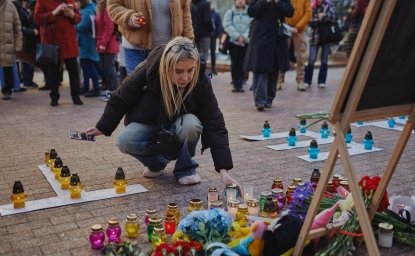
Talking to the Dead to Heal the Living
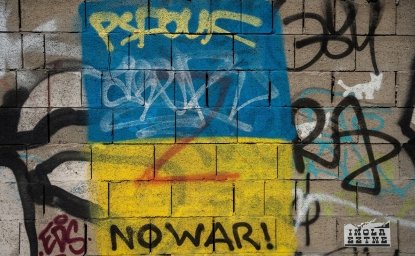
Ukrainian Issue in Polish Elections

